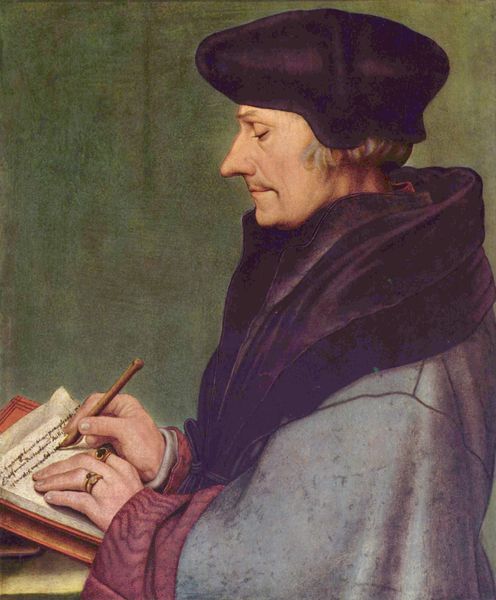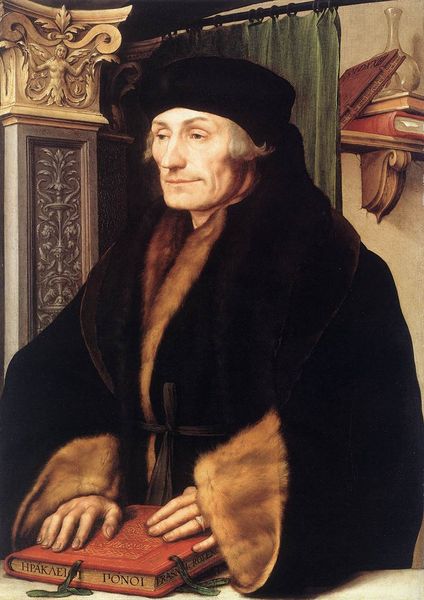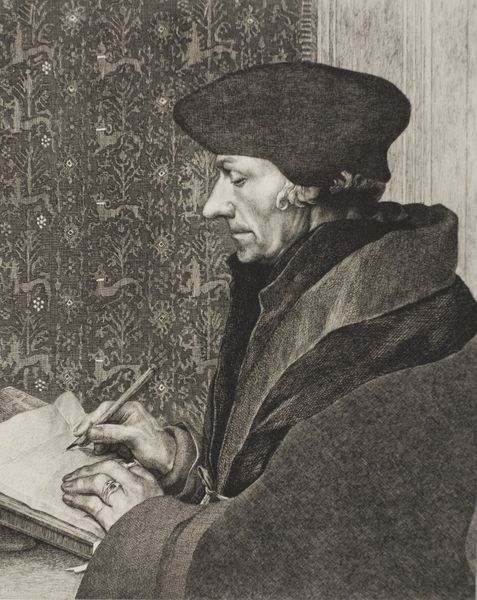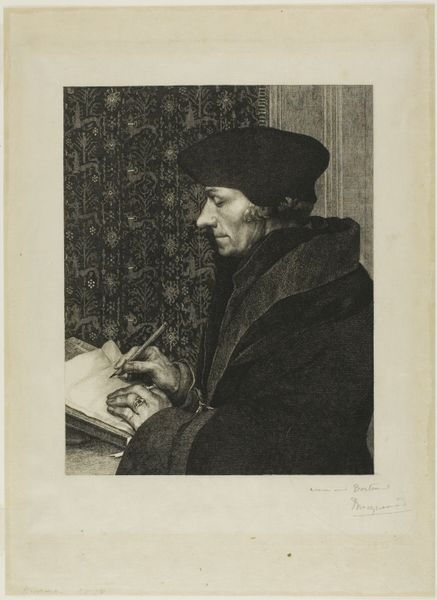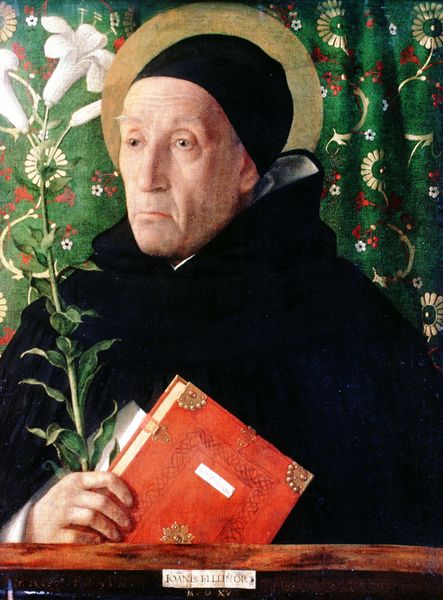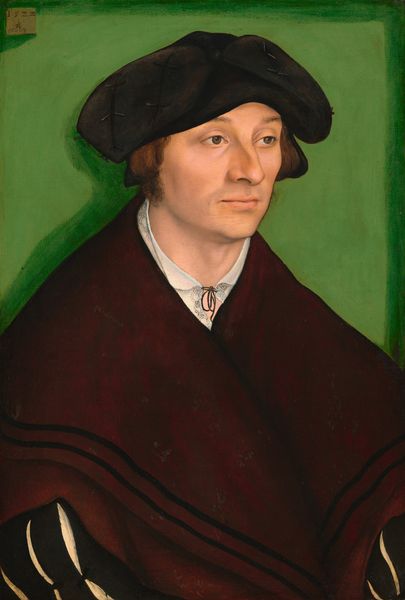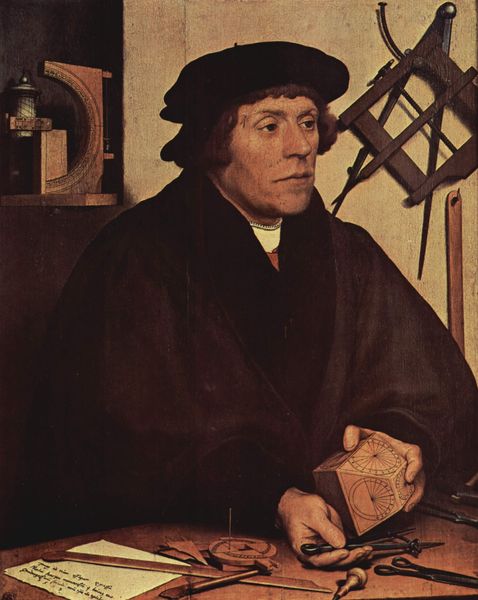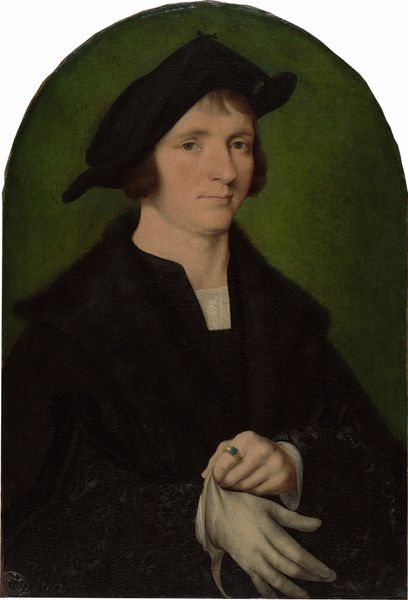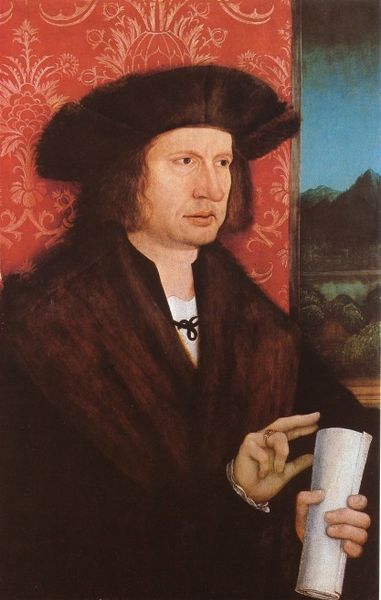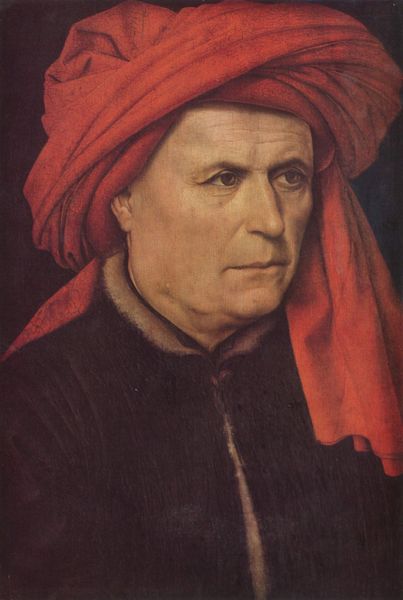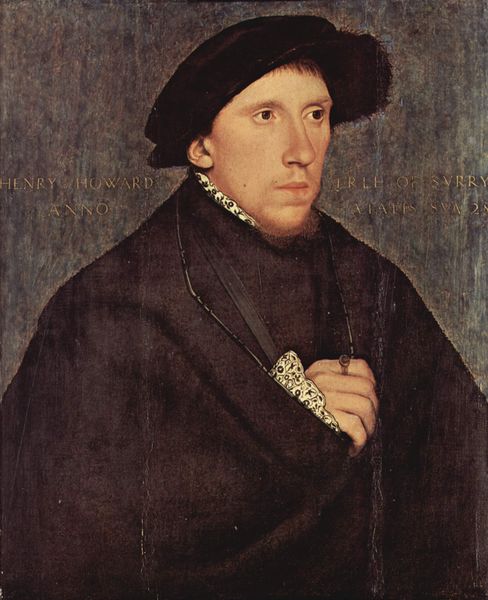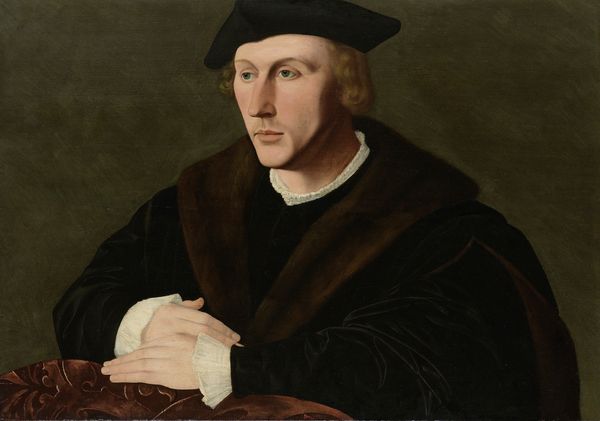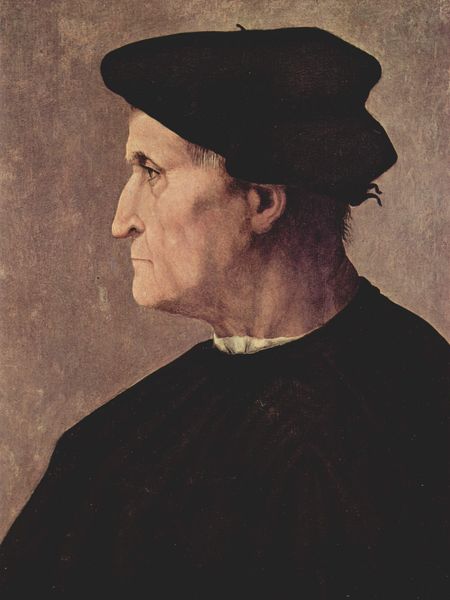
#
portrait
#
3d sculpting
#
character portrait
#
portrait subject
#
famous-people
#
male-portraits
#
portrait head and shoulder
#
edgy portrait
#
facial portrait
#
portrait art
#
fine art portrait
#
celebrity portrait
#
digital portrait
Dimensions: 32 x 42 cm
Copyright: Public domain
Curator: Welcome! Let's dive into Hans Holbein the Younger's "Portrait of Desiderius Erasmus," painted in 1523. Editor: It’s a very dignified portrait. Erasmus looks deeply engrossed in his writing. The details, like the rings and the fabric behind him, are impressive. What stands out to you when you look at this piece? Curator: Well, I see it as more than just a portrait of a man writing. It's a powerful statement about the role of the intellectual and the power of humanist thought during a period of immense social and religious upheaval. Notice how Holbein frames Erasmus not as a detached scholar, but as an active participant shaping ideas. The act of writing itself is presented as an act of agency, almost resistance. What do you think about that perspective? Editor: I hadn’t thought of it that way. So, you see the act of writing, the production of texts, as a form of power during the Reformation? Curator: Absolutely. Erasmus, despite his criticisms of the Church, aimed for reform from within, using his intellect as his primary tool. This portrait isn't just about his likeness; it symbolizes the tension between intellectual freedom and the rigid structures of power at the time. Look at his garments—they signify position, yet he's captured in a very human act. How does that contrast strike you? Editor: I see what you mean. It’s like Holbein is capturing Erasmus’s personal agency. Curator: Precisely. Holbein is carefully constructing an image of intellectual authority and inner resolve amidst cultural change. Now when you look at it what does that say about society during the reformation? Editor: I will now be aware of this artwork on the basis of humanistic agency, social power, and the tension surrounding the Reformation. Curator: Hopefully you can use these frameworks for viewing other artwork in similar contexts.
Comments
No comments
Be the first to comment and join the conversation on the ultimate creative platform.
